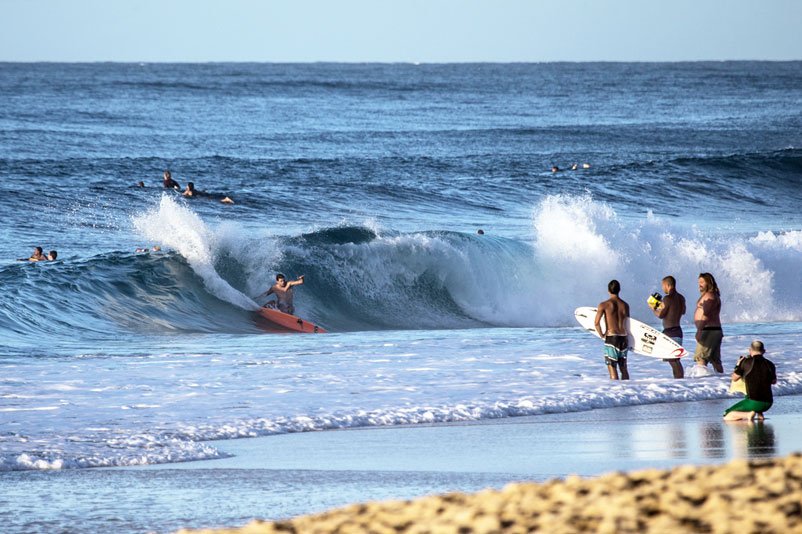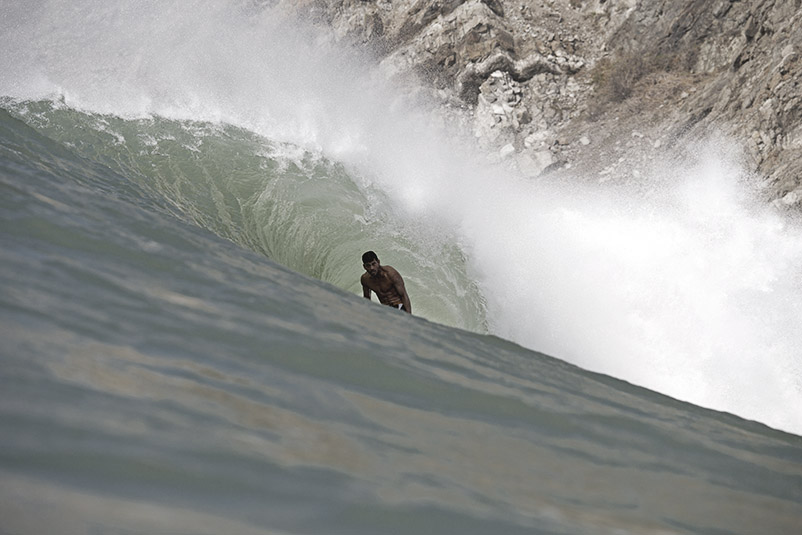The Lost Coast: The deep lines of Kauaian localism
Words by Jed Smith It’s a short flight from the centre of the surfing universe. It’s produced one of the greatest collectives of talent in surfing history – one that includes the late three-time world champion Andy Irons, brother Bruce, Sebastian Zietz, Danny Fuller, Reef McIntosh, Kala and Kamalei Alexander, and Keala Keneally among others. […]
Words by Jed Smith
It’s a short flight from the centre of the surfing universe. It’s produced one of the greatest collectives of talent in surfing history – one that includes the late three-time world champion Andy Irons, brother Bruce, Sebastian Zietz, Danny Fuller, Reef McIntosh, Kala and Kamalei Alexander, and Keala Keneally among others. It pumps for the better part of a year, and yet you’ll barely recall a single published photo or video section from the island of Kauai.
“As a community everybody knows the rules,” explains former World Tour surfer, mixed martial artist and mayoral candidate, Dustin Barca. “But there is always someone who wants to test their luck and feels like they’re gonna be the first one to blow the lid on it and it never ends up good for them.”
In an age where everything is stacked against its privacy – technology, authorities, an infectious social media Warholian-fame complex – the island of Kauai has remained remarkably preserved. The reason is unashamed localism. A particularly fierce brand of it with tentacles that spread as far as Australia and the US mainland, as American surf website The Inertia found out recently after posting a youtube video featuring waves from Kauai. The site was peppered with abuse before the post was deleted.
How Kauai has managed to maintain such a grass roots localism campaign long into the 21st century remains one of surfing’s most captivating stories. With origins that go back centuries, explains Barca.
“There’s a long history of Kauai being unconquered and localised,” he says. “It goes beyond surfing and what’s happening now. We were born and raised to protect our natural resources and surf spots.”
Unlike the other islands, Kauai only became part of the Hawaiian kingdom through agreement. They could never be conquered by invading forces.

Barca and a photo that never gets old. North Shore, by Laserwolf
“The history that people don’t really know is that it (Kauai) was the only island that wasn’t conquered by King Kamehameha,” says Barca. “It’s always been unconquered so there is a sense of liberation amongst the people and the place. It’s never really had outside influence or interference when it comes to our resources or waves.”
Raised by a single mother, in a house shared by local surfing legend, Titus, Dustin was privy to much of the island’s old school tribal justice.
“Shoot, I saw a lot of fights, a lot of good scraps,” he says. Often, he was the target: “I was a cocky kid so I caught my fair share of lickings. I was the whipping boy of the Wolfpak.”
Ultimately, however, the punishment was reserved for disrespectful outsiders. Their fierce brand of localism forming but one part of the island’s social contract.
“They’d always tell us, ‘It’s for you guys, to keep it sacred for the next generation.’ And I took it to heart 150%,” says Barca.
Growing up in close proximity to the North Shore only hardened their resolve to keep Kauai sacred.
“To see the change on the North Shore of Oahu in the last 30 years, basically they threw people out so it could become the epicentre of surfing that it is today. We would never want to see that happen to our kids and our elders didn’t want it to happen to us,” he says, adding, “Kauai isn’t the North Shore of Oahu and it never will be. This island has a lot of people whose lives revolve around protecting their spots, the rivers, the mountains, and natural resources.”
They achieve this by maintaining constant vigilance in the face of not only disrespectful surfers but also development proposals, as evidenced by the recent defence of Hanalei Ridge.

Kamalei Alexander finds a quiet moment in a Mexican storm. Photo: Laserwolf
“We had 500 people in a room raging against it and it never happened,” says Barca of the successful campaign to defeat the proposed developments overlooking the wave which he, Andy, Bruce and many more cut their teeth on. “Money buys permits and lawyers but people are aware of it in our community and it’s a small community where everyone knows everyone and everyone hears everything by word of mouth. We all work together as a community to keep the island as pristine as possible.”
Despite losing his recent bid for Mayor, (a campaign that came on the back of his opposition to the presence of GMO farms on Kauai) Barca remains one of the most recognisable figures on the island. A celebrity in both surfing and mixed martial art circles, his eco-farm, which houses 15 sheep and 12 pigs, also provides food for a large chunk of the local community. And when it comes to the future of Kauai, you better believe he is very hands on.
“Development is inevitable in one way or another but for me, my goal is to guide people in the best direction and that is to be environmentally conscious. We live on an island so further development needs to be environmentally friendly,” he says.
Though also tells Stab the doors are always open for visitors; just tread carefully.
“All our elders on the island do their part to keep the island protected and to have no photos or videos taken of our special places. That’s the reason for the lack of exposure. People are more than welcome to visit, but you have to show some respect and respect our rules and traditions as an island. Do not take pictures and you’re more than welcome with aloha, but with that aloha comes a mutual respect and love and humility within your presence and how you present yourself.”




Comments
Comments are a Stab Premium feature. Gotta join to talk shop.
Already a member? Sign In
Want to join? Sign Up